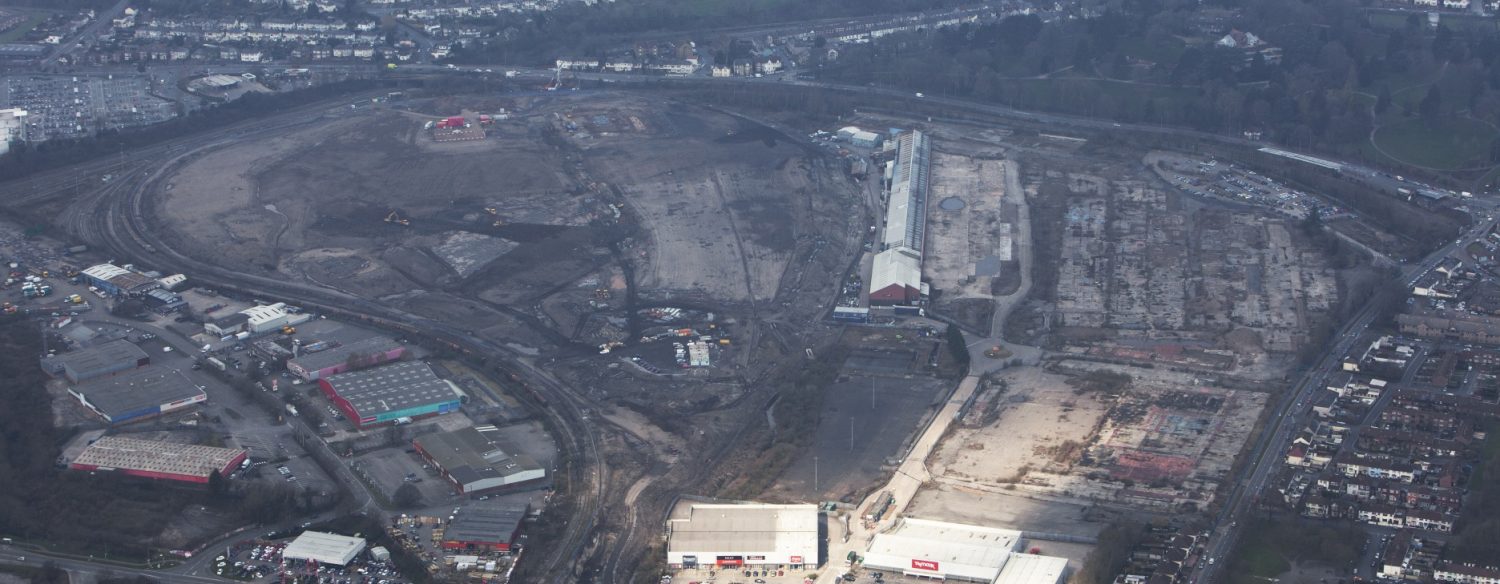
- 20 HECTARE SITE LOCATED SOUTH-WEST OF NEWPORT CITY CENTRE
- DEMOLITION OF EXISTING STEEL RAILWAY OVER BRIDGE
- CONSTRUCTION OF NEW PRECAST CONCRETE BEAM OVER BRIDGE OVER OPERATIONAL RAILWAY LINE.
- NEW TRAFFIC SIGNALISED JUNCTION
- ON-SITE INFRASTRUCTURE
- CONSTRUCTION OF A PUMPING STATION
- 60M LONG RETAINING WALL
PROJECT OUTLINE
The former Monmouthshire Bank Railway Sidings is a 20 hectare site located southwest of Newport City Centre. It has planning consent for the development of the brownfield site to accommodate 575 new homes. Major reclamation and remediation work was undertaken by Walters as an initial contract. In order to access the site, the house builders required all primary infrastructure to be in place, including a new bridge across an existing railway line.
PROJECT DELIVERY
Access from the north was provided by widening the existing Cardiff Road dual carriageway. Constructing a new traffic signalised junction and road over rail bridge consisting of precast concrete beams on piled reinforced concrete foundations. This was constructed at the location of an existing twin deck 25m span steel superstructure bridge, demolished as part of this contract over the operational railway.
The on-site infrastructure consisted of approximately 2km of 6.1m wide carriageway including associated foul and storm drainage up to 1500mm diameter. Two storm retention tanks with a combined capacity of approximately 1800m3 and an attenuation pond completed the infrastructure.
Following exhaustive investigation of the historic drainage system, the existing deep culverts were grouted following the diversion of all flows. A 60m long retaining wall was constructed to support railway sidings above the southern access and a 500m long, 1200mm diameter culvert diversion follows the north eastern site perimeter.
The development requires a site pumping station to deal with future flows from the sewers. This takes the form of a 3m diameter shaft, 9m deep with associated storm cell and valve chambers within an area surrounded by piled reinforced concrete retaining walls. The 1.3km outfall from this pumping station is routed offsite beneath existing highways. It was installed using directional drilling techniques in order to minimise disruption to residential properties and businesses along the route

